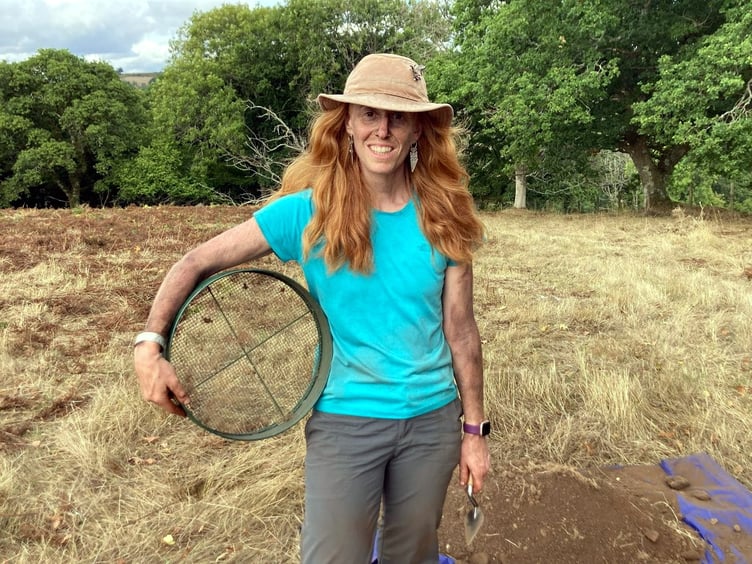ARCHAEOLOGISTS and volunteers have unearthed some exciting finds which point to prehistoric activity in one of Dartmoor’s prettiest valleys.
More than 80 flints, possibly dating to the late Mesolithic and early Neolithic period - around 6,000 to 3,000BC - were recovered during a series of community digs on a farm between Bovey Tracey and Lustleigh.
The exciting finds add to Dartmoor’s international reputation for being one of the finest and most important archaeological and cultural heritage landscapes in Europe.
The test pitting programme was aimed at investigating a site known as a lithic scatter – an area within which stone tools and the debris produced by their manufacture are found. The work conducted expanded on the results of previous work undertaken on the same site.
In early 2019, DNPA Archaeologists Dr Lee Bray, Andy Crabb and Emma Stockley carried out investigations on the site in the Wrey Valley as part of the Moor Than Meets the Eye landscape partnership scheme.
The excavations offered tantalising clues into the past, in the form of a small collection of stone tools and other artefacts known as lithics.
This prehistoric activity dates back to the Mesolithic or Early Neolithic period, however, more work was needed to reveal a fuller picture.
Fast forward to 2022 and with the enthusiastic support and cooperation of the landowner, Lee returned alongside Emma, who is now researching Dartmoor’s hunter-gatherer past as part of her PhD at the University of Leicester, and a group of keen volunteers.
New test pits were dug near where artefacts were found in 2019. Alongside flints, other discoveries from more recent periods included fragments of pottery, glass, slag and pieces of iron ore.
Although seemingly wild and untouched, Dartmoor has been subject to human management for over 6000 years, a time when the moor was still covered in trees and its inhabitants were just small hunter-gatherer communities.
Flint tools, such as the ones found on the dig, are all that’s left of these people who began the clearing of the forest to aid in hunting.
Some of Dartmoor’s oldest burial monuments were constructed during this time, such as stone rows, standing stones, stone circles, burial chambers and burial mounds.
It’s hoped that these new archaeological discoveries could help to provide an insight into the daily life of these ancient ancestors.
‘The site poses interesting archaeological questions about how and why people used the landscape in a period about which little is currently known on Dartmoor,’ said Dr Bray.
‘It is located on a ridge between the high moors to the west and the Wrey Valley immediately to the east; a location which may have provided hunter-gatherers with a good vantage point from which to observe game moving through the landscape.
‘It was also quite surprising to find iron ore fragments – deposits of ore are usually found on the opposite side of the valley where they were mined between the 18th and 20th centuries.
‘We hope that a more detailed examination of the finds will reveal more detail about the nature of human activity on the site in different periods of the past.’
The dig was a community effort involving historians, archaeologists, volunteers and the landowner.
The excavation also benefited from the help of Dr Laura Basell and Archaeology students from the School of Archaeology and Ancient History, University of Leicester; and Professor Mark Horton from the Royal Agricultural University.
To experience some of Dartmoor’s ancient heritage, there are a number of other archaeological sites that can be visited on Dartmoor. Next to Houndtor stands the site of a 13th-century small hamlet of 4 longhouses (main dwellings) and another seven other buildings. It is a well-preserved example which has been subject to extensive excavation.
Visitors can also visit Grimspound, home to a massive settlement from over 2000 years ago and one of Dartmoor’s largest and most iconic archaeological sites.





Comments
This article has no comments yet. Be the first to leave a comment.